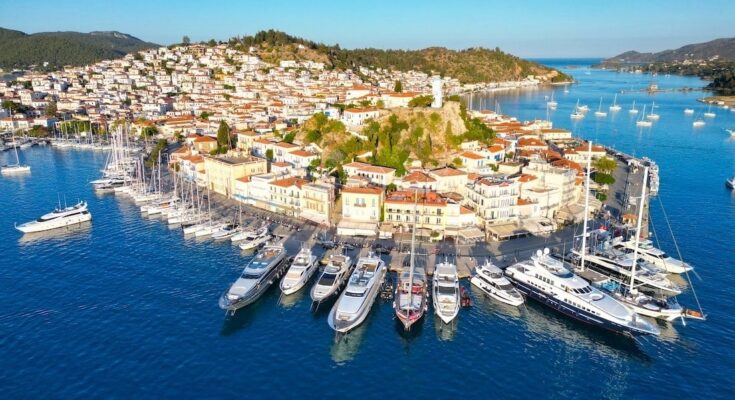Many Greek ports are “antiquated and some of them are dangerous”, a report released this week by the Panhellenic Union of Merchant Marine Captains (PEPEN) warns.
The report describes in detail with maps and photos the problems captains face to moor ships carrying hundreds of passengers safely every day, especially during the summer months.
Among the problems described are ports that serve thousands of cars without adequate spaces for parking, ports that over the years have lost their depth and make the approach of ships a precision exercise and the uncontrolled mooring of large yachts at the entrance of the harbors which make the approach of the cruisers look like “threading a needle.”
The report also notes passenger waiting areas in the ports are inadequate and in some cases non-existent. Passengers wait for long tomes with little if any shade.
PEPEN says that many of the problems sound as simple as changing bulbs in headlights and turn signals. However, their importance for security is great.
Other problems are much more complex such as the construction of new projectors or the dredging of their port basin.
But it’s not just the infrastructure. The PEPEN report says that there are also problems with policing and control of marine traffic.
Specific problems at ports on Greek islands

“The progressive increase in the number of ships approaching the port of Parikia, in Paros, necessitates the expansion of new positions to the northwest. It is necessary to regulate the traffic of tourist and pleasure boats in the bay of Parikia.
“The anarchic, disorderly, unannounced, and unlimited traffic of the above-mentioned boats in Parikia Bay where they pass through the mooring positions and the port basin for the execution of turning maneuvers of the ships to arrive at or depart from the marina poses enormous risks of causing an accident”.
The smaller the islands, the greater the abandonment the report notes. In the island of Kasos the approach and safe mooring is described as “extremely precarious and dangerous”.
But even the relatively medium-sized islands like Kea do not lack problems: the captains are asking for the extension of the pier there to the north and to the south and the deepening of the port basin and the light marking of the jetty.
For Poros, it calls for the deepening of the port and the channel that connects the island with Peloponnese. It also says that stricter control of marine traffic is needed “to avoid disorderly traffic, especially during the hours of passage of ships in the channel, which creates risks especially when strong winds blow”.
In Rethymno, immediate dredging of the port is required, which over the years has become shallow due to floating materials.
At Faneromeni in Salamis, the approach and docking of the ship are characterized as dangerous. The port of Samothraki is characterized as dangerous for large ships as it is exposed to the north winds, while the pier at Naxos is in a state of disrepair.
But even on islands that are international symbols of the country, such as Santorini, the problems are very serious: “The island must find an alternative solution if ships cannot approach, in some other leeward wind from the west and south-westerly winds location”, while “after the extension of the port to the north, the anchorage is affected due to large depths”.
The Greek government says that it has launched a major investment program to improve the situation in more than 50 ports in the Aegean and other regions.
These are projects with a total budget of 324 million euros ($354 million). However, critics point out that the allocated funds are not sufficient after decades of abandonment.



